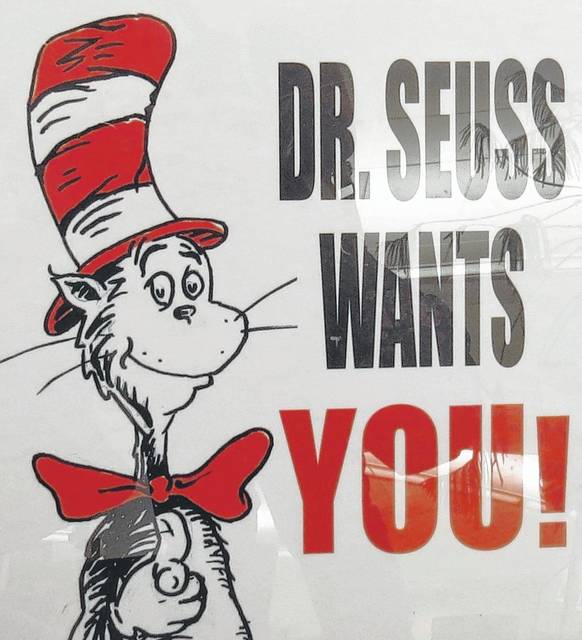POLKTON — Before he was a famous children’s book author, Dr. Seuss drew political cartoons. Copies of the 75-plus-year-old cartoons are on display at South Piedmont Community College until Friday.
Rhonda Benton, a history and English teacher with Anson County Early College, brought the display to the college’s Horne Library on the L.L. Polk Campus in Polkton. The display, sponsored by the Center for Holocaust and Humanity Education, is made up of 14 panels, 12 of which contain Seuss cartoons from World War II.
On its website, the Center describes the display as “an original exhibit highlighting the remarkable and insightful works that show an unexpected and unknown aspect of Dr. Seuss. Typical Seuss characters encourage us to discover the issues that America must address while the rest of the world was at war. Seuss’ art confronts common issues in America that were often ignored, including our own: isolationism, racism, antisemitism, and willingness to appease.”
Theodore Seuss Geisel, better known as Dr. Seuss, first published his early cartoons in “Jack-O-Lantern,” a humor magazine he edited through Dartmouth College, but lost his place as editor when he and friends were found drinking gin in his room, according to seussville.com, the official website for Seuss. He continued to publish his cartoons under aliases, and some included his middle name, “Seuss.” When drawing for a magazine, he signed his name as Dr. Seuss beginning in 1928. Seuss wasn’t really a doctor, as he left higher education to pursue becoming a cartoonist, according to the website, but Dartmouth later awarded him an honorary doctorate in 1955, the first in a collection of honorary degrees.
“By pursuing his love of drawing, Ted Geisel became one of the few people to earn a Ph.D. by dropping out of graduate school,” the website reads. He wrote an unpublished children’s book in 1931, and had a successful career in advertising. He published four children’s books by 1940 and soon started a fifth, but took a hiatus during the war to create his political cartoons. He drew more than 400 editorial cartoons during his time as the chief editorial cartoonist for PM, a New York newspaper, according to Dr. Seuss Went to War through the University of California- San Diego Library.
One of the 12 cartoons on display in Polkton shows a woman wearing an “American First” shirt reading “Adolf the Wolf” to two young children.
“… and the Wolf chewed up the children and spit out their bones… But those were Foreign Children and it really didn’t matter,” the woman reads.
With many men leaving jobs in the United States in order to fight in the war, women and African-Americans filled some of the positions; however, racial tensions made it a slow, painful process to add black employees workforce. One Seuss cartoon in the display was a jab at employers unwilling to employ black workers. It depicts a man representing the war industry playing an organ with his hands on the ivory keys. Cobwebs coat the black keys.
“Listen, maestro… if you want to get real harmony, use the black keys as well as the white!” Uncle Sam instructs the player.
The display explains that civil rights leader A. Philip Randolph suggested a march on Washington, D.C. to protest the discrimination — and later cancelled it when President Franklin Roosevelt enacted the Fair Employment Practices Committee — the committee wasn’t successful over the following year and African-Americans still had a difficult time finding employment.
“Most people don’t realize Dr. Seuss did cartoons for politics,” Benton said. “It’s cool to see.”
Many viewers may recognize parts of the drawings, even if they’re only familiar with Seuss’ books.
“You can look and notice some characters appear in his books but in a different context,” Benton said.
Benton’s class began studying American history this week. A Holocaust survivor will speak to the class, and the students will view the display.
Digital copies of the cartoons are available to view at “Dr. Seuss Went to War” through the University of California- San Diego’s library website at goo.gl/Pi03JL.
Reach reporter Imari Scarbrough at 704-994-5471 and follow her on Twitter @ImariScarbrough.



